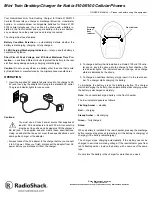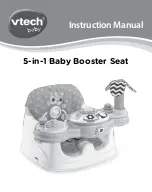
11
Step #6: Attach the power harnesses black wires to the negative (-) battery
terminal and the red wires to the positive (+) battery terminal. The
factory battery wires are also re-installed at this point. When attaching
the power and ground wires, it is always a good practice to do the neg-
ative (black) first. When the positive connector touches the battery, some
sparking is normal. This is a function of the capacitors in the
amplifiers charging up.
Step #7: Turn the stereo on and, at low volume, test to make sure all speakers are
working. Each amp has a 3 position volume switch you can now adjust
to tune the volume levels between amps. If there are front speakers and
lids, and you want the lids louder, lower the Master Amp to “0” or “-3”
setting and leave the Slave Amp at “+3”. There is no right or wrong
here, just set it how you prefer it.
Now is a good time to “clean up” and secure any wiring inside your fairing using
supplied zip ties. For best possible FM reception, DO NOT attach any of the
amplifiers wiring to any factory antenna wires!
IMPoRTAnT: With all wires secured, turn the front
wheel to each extreme side making sure that any wires
cannot bind or impede the steering of the motorcycle.
failure to do so can cause an accident resulting
in serious injury or death!
Final System Adjustments:
From time to time, the “Motor Company” will release software updates on their
website which can be downloaded, and installed on the bike. For best perfor-
mance of your audio system, please make the downloads are up to date! Earlier
versions of the software could cause any brand of aftermarket amplifier to distort
prematurely so this is an important point!
How the system sounds when the bike is running is going to differ from how it
sounds when the bike is not running. This is a function of the radios built in
software. You may find yourself adjusting the bass and or treble controls if you’re
listening to the bike without the motor running.


































